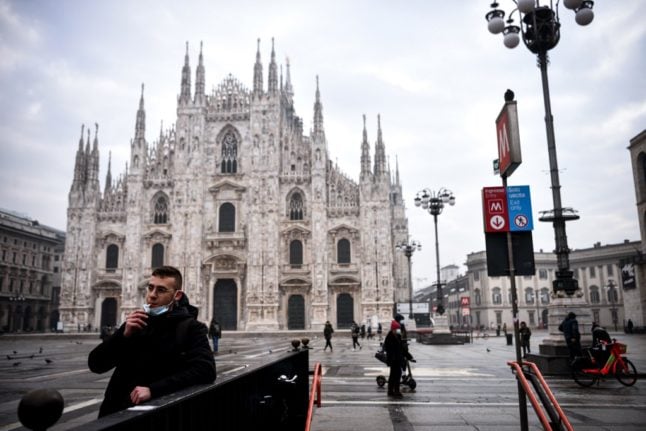Italy's Rt number, or reproduction rate, has dropped to 0.97 – the first overall reduction seen in five weeks, while admissions to intensive care units and hospital wards have also dropped.
But Health Minister Roberto Speranza said on Saturday that the challenge is still tough as ten regions still have an Rt number above 1.
Under the national tiered system, with rules changing weekly based on the level of contagion risk, the hardest-hit region of Lombardy has been moved from the “red zone” imposed last week, to the slightly less restrictive “orange zone”.
Sardinia faces more restrictions, as it has moved from the “yellow zone” to “orange zone.”
Meanwhile the governor of Sardinia, Christian Solinas expressed his concern about moving Sardinia into the “orange zone” and hopes for a correction of the decision.
All other regions remain where they were placed last week, which means Sicily and Bolzano stay in 'red zones” with only supermarkets, pharmacies and other stores selling basic necessities left open.
14 regions are will be in the “orange zone” which means shops are open but malls are shut on public holidays. Restaurants and bars are closed except for take-away until 10pm and delivery.
Yellow zones do not face any additional restrictions beyond the national ones.
Health Minister Roberto Speranza has signed the ordinance on Saturday, making the changes official from Sunday 24th January, with the new classification based on the latest health ministry data.
This means Italy's regions will be classified as follows from Sunday January 24th:
Red zones: Sicily, Bolzano
A nighttime curfew remains in effect throughout the country from 10pm to 5am and gyms, pools and theatres remain closed.
Last week, Italian Prime Minister Giuseppe Conte announced a new emergency decree which keeps the current ban on non-essential movement between regions in force until at least February 15th.
Travel between regions is allowed for work, health, or other essential reasons.
New 'white zones'
Under the new emergency decree, Italy has also added an extra tier to its system of varying restrictions: white, reserved for parts of the country where the coronavirus risk is lowest.
These areas are exempt from the restrictions in place in yellow, orange or red zones, including the nightly curfew and 6pm closing time for bars and restaurants.
EXPLAINED: What are Italy's new coronavirus 'white zones'?
To qualify, regions must have fewer than 50 cases per 100,000 inhabitants for three weeks straight, as well as showing other positive indicators such as a low reproduction number and effective tracing system.
None of Italy's 20 regions currently meet the criteria, under the latest health data.
Note: Some rules may vary under local or regional restrictions in Italy. It is recommended that you also check the rules set by your town and region. Find out how to do that in a separate article here.



 Please whitelist us to continue reading.
Please whitelist us to continue reading.
Member comments